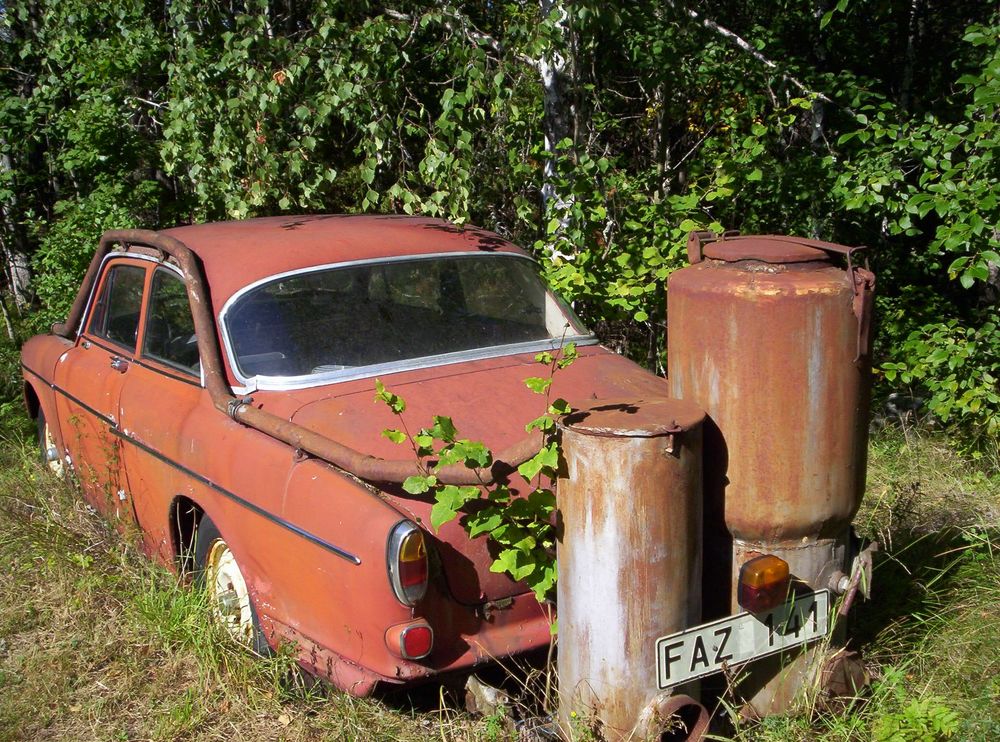A car with a gas generator on a trailer in Victoria, Australia.
The earliest coal gases were derived from coal and peat and was used for lighting and cooking purposes.
Syngas continued to be used in blast furnaces and in factories until the 1920s.
At the end of the 1930s, about 9,000 vehicles were in use in Europe equipped with Imbert generators.
That number would rise exponentially during World War 2, when gasoline became short in supply.
In Germany alone, around 500,000 coal gas vehicles were in operation by the end of the war.
A internet of some 3,000 wood stations were set up, where where drivers could stock up on firewood.
London bus with gas generator on trailer.
Altogether, more than one million wood gas vehicles were used during World War Two.
And carbon monoxide is a slow burning gas.
This means that wood gas has very low energy density.
Car with wood-gas generator: Berlin 1946
Front view of the same car.
The pipe running from the back of the car goes into a precipitation tank at the front.
After the precipitation tank the gas goes into the cooler mounted just above it and looks like a radiator.
However, a highly efficient gasification process can convert about 75% of the fuel into a combustible gas.
Furthermore, a vehicle running on wood gas has significantly lower exhaust emission than one running on petrol.
Combustion of wood gas generates no particulates, and very low carbon dioxide which is good for the environment.
The most obvious disadvantage of an woodmobile is the size of the fuel tank required.
The gas generator takes up a lot of space and can easily weigh a few hundred kilograms empty.
After the war ended, gasoline once again became available and the technology became obsolete.
A wood-gas powered motorcycle.
Car with gas generator on trailer, 1943.
Dutch motorcycle with wood-gas generator.
Refuelling a gas generator in Australia.








